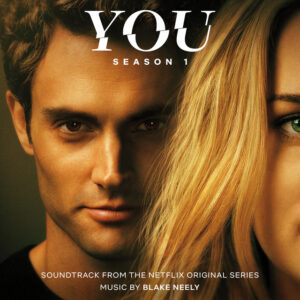Taj Mahal 1989
Taj Mahal 1989
‘Taj Mahal 1989’: The poetry and politics of love

Introduction
Taj Mahal 1989 is an Indian web series that beautifully captures the essence of love, relationships, and societal norms in the late 1980s. Released on Netflix in 2020, the series is directed by Pushpendra Nath Misra and features a talented ensemble cast including Neeraj Kabi, Geetanjali Kulkarni, Danish Husain, and Sheeba Chaddha. Set against the backdrop of Lucknow, the series blends romance, politics, and philosophy, offering a thought-provoking narrative about the different shades of love.
ing love in their unique way. The story follows different age groups and perspectives, ranging from young, idealistic college students to middle-aged married couples struggling to keep their relationships alive.
The central characters include Akhtar (Neeraj Kabi) and Sarita Baig (Geetanjali Kulkarni), a married couple whose relationship has lost its spark. Their journey of rediscovering love is beautifully depicted through poetic dialogues and subtle performances. Another significant plotline revolves around Sudhakar (Danish Husain) and Mumtaz (Sheeba Chaddha), whose unconventional relationship challenges societal norms.
Additionally, the series portrays the vibrant college life of Lucknow University, where young lovers Rashmi (Anshul Chauhan) and Dharam (Paras Priyadarshan) experience the highs and lows of romance while navigating political ideologies. The presence of local poet and philosopher Angad (Anud Singh Dhaka) adds an intellectual layer to the series, making it a unique exploration of love beyond just emotions.

Themes Explored
Taj Mahal 1989 is a multi-layered narrative that explores several themes, making it more than just a love story:
- Different Shades of Love: The series portrays love in its various forms—young and reckless love, mature and worn-out love, idealistic love, and pragmatic love. It questions whether love is eternal or if it changes with time and circumstances.
- Politics and Love: Set in a politically charged atmosphere, the series examines how ideologies influence personal relationships and how love often takes a backseat when ambition and beliefs come into play.
- Philosophy and Poetry: The show frequently references poetry and philosophy, adding depth to its storytelling. It pays tribute to classical Urdu poetry, which serves as a metaphor for the characters’ emotions.
- Nostalgia for the 1980s: The series perfectly recreates the late ’80s with its cultural references, fashion, and the simplicity of life before digital distractions.
- Gender and Societal Expectations: Through its female characters, the series highlights the struggles of women in maintaining relationships, careers, and individuality in a male-dominated society.
Character Analysis
- Akhtar Baig (Neeraj Kabi): A philosophy professor who once shared a passionate relationship with his wife but now finds himself in a mundane marriage. His journey is one of rediscovery and introspection.
- Sarita Baig (Geetanjali Kulkarni): A woman struggling to find meaning in her marriage, Sarita’s character resonates with many women who sacrifice their aspirations for their families.
- Sudhakar and Mumtaz (Danish Husain & Sheeba Chaddha): An unconventional couple who defy societal norms to stay together, representing the idea that love transcends societal judgments.
- Rashmi and Dharam (Anshul Chauhan & Paras Priyadarshan): College sweethearts who face ideological and personal challenges, showcasing the youthful passion and heartbreak of first love.
- Angad (Anud Singh Dhaka): A poet and thinker, Angad serves as the philosophical voice of the series, often questioning the idealistic notions of love and life.
Cinematic Excellence
Taj Mahal 1989 stands out for its exceptional storytelling and cinematography. The visuals capture the essence of old Lucknow, with its narrow lanes, university campuses, and classic tea stalls, creating an immersive experience. The dialogues are poetic and laden with literary references, making the series a treat for lovers of art and literature.
The music and background score complement the nostalgic feel of the series. The use of old Hindi songs adds to the charm, evoking emotions that transport the audience back to the simplicity of the 1980s.
Critical Reception and Impact
The series received widespread acclaim for its unique storytelling, nuanced performances, and rich cultural representation. Critics appreciated the mature handling of love and relationships, moving away from the conventional romantic narratives typically seen in Indian cinema and television. The realistic portrayal of middle-aged love and the struggles of married couples was particularly praised, as it resonated with audiences across different age groups.
While Taj Mahal 1989 did not become a mainstream commercial hit, it found a dedicated audience who appreciated its artistic depth. The series sparked discussions on social media about love, relationships, and nostalgia, proving that stories rooted in simplicity and authenticity still have a place in the digital age.
Conclusion
Taj Mahal 1989 is a poetic and heartfelt exploration of love in its many forms. It stands apart from conventional romantic dramas by offering a deeply philosophical and nostalgic perspective on relationships. With its well-etched characters, beautiful storytelling, and evocative setting, the series remains a hidden gem in the world of Indian web series. Whether you are a fan of romance, literature, or nostalgia, Taj Mahal 1989 is a must-watch that leaves a lasting impression on the heart and mind.











Post Comment